SR Suntour Durolux (2016-2019) Fork
(discontinued)
| Where To Buy | |||
|---|---|---|---|
Free shipping on orders over $50 (continental U.S. only).
International shipping available. Some exclusions apply. |
|||
Free shipping on orders over $50 (continental U.S. only).
International shipping available. Some exclusions apply. |
|||

When SR Suntour sat down to redesign their Durolux fork, they set out to meet the same high level of performance as their big competitors while also ensuring consistency in the production process. Lofty goals no doubt, considering the competition is pretty dang dialed these days, but the brand has much more experience than many of us may think, including what it takes to make high-end products.
Like all of their forks, the new Durolux was built with the "Quick Service Product" philosophy in mind, which boils down to "less wrenching and more riding." Now add in fully adjustable high and low-speed compression, high and low-speed rebound, easy air spring volume adjustment, bleed ports, internally adjustable travel, a 20mm axle, an integrated mud fender, and a sealed cartridge damper capable of taming a huge range of terrain and you've got a fork capable of rivaling the market's best, at least on paper. Oh, and it comes in at $200 or more less than comparable RockShox Pike and FOX 36 forks.
Sound appealing? It did to us, so we flew to Mountain Creek Bike Park in New Jersey to put the Durolux to good use in some incredibly rough terrain. Before we dive into how it rides, let's discuss what's new and touch on a few ways SR Suntour is stepping up their game.
Durolux R2C2 Highlights
- 160, 170, or 180mm travel (internally adjustable)
- 27.5-inch only
- Air sprung with new air volume adjustment system and two step coil negative spring
- Fully sealed R2C2 cartridge damper with new Piston Compensator System (PCS)
- External high and low-speed rebound, high and low-speed compression adjustments
- Additional RC2 (high and low-speed compression, low-speed rebound) damper option
- Air bleed/lubrication holes
- Quick Service Product (QSP)
- Black 36mm 7000 series alloy stanchions
- Hollow forged crown
- 20mm Q-LOC2 axle
- 180mm post brake mount
- Tapered 7000 series alloy steerer
- Integrated/removable mud fender, carbon optional
- Black and white colors
- Weight: 2,337 grams (5.2-pounds)
- MSRP: $800 for R2C2 model, $700 for RC2 model
Lots of Wires, Data Acquisition and the Piston Compensator System
With beefy 36mm black stanchions (up from 35mm in 2015) and enough travel to tame the rowdiest of trails, this beauty certainly looks the part, but it's what's inside that's really worth talking about.

At the Leogang UCI Downhill World Cup earlier this year, SR Suntour rigged up a bike with a fancy data acquisition (DAQ) system and sent one of their Werx Pro riders down the mountain as fast as they could possibly go. The fork on the bike contained a prototype closed cartridge damper system that began it's life nearly two years ago, when SR Suntour developed what would become the heart of the new Durolux. Part of what makes it special is that it utilizes an internal floating piston (IFP) called the Piston Compensator System (PCS). As the fork is compressed, oil flows past various shim stacks and a small amount of oil is displaced by the damper shaft. The spring loaded IFP simply slides back and forth to accommodate the volume change, as shown in the video below:
How does this differ from the norm? In RockShox's bladder system, this displacement causes their Charger damper bladder to expand. In FOX's FIT4 system, the bladder starts in a compressed state and fills back to normal. When it's time for service, both competitor systems require a vacuum bleed, which includes the use of a special syringe. SR Suntour's solution doesn't require any extra equipment or tools at service time while offering similar performance benefits. The addition of the PCS means a big performance improvement over their old open bath, closed cartridge emulsion damper system, while remaining easy to consistently bleed on the production line or in your garage. Unlike many IFP systems found in mountain bike rear shocks, the IFP is not pressurized on one side, but instead uses a lightweight 10 Newton spring to allow the system to move as freely as possible.
One of the biggest things that can detract from consistent feeling suspension is air passing through the damper instead of oil. You simply can't damp air. "But it's sealed," you might be thinking. "How does air get in there?" The biggest culprit is something called cavitation, which is the formation of vapor cavities (bubbles and voids) in the damper oil due to rapid changes in pressure. At high shaft speeds, these cavities can form on the backside of the piston, which can translate to a fork with zero damping for a brief but potentially scary moment. Here's a video example for visual clarification. There are some countermeasures to help prevent it from happening, including SR Suntour's PCS solution.
The Leogang test showed that 80% of the time the fork was compressed, it registered shaft speeds of more than 2.5 meters per second - fast enough that the high-speed compression circuit was constantly at work. When a fork is subjected to a hit in the 4+ meters per second range, cavitation (and the resulting temporary loss of damping) is possible.

They've continued to use DAQ systems to collect data on many trails and under many riders. By looking at multiple big and small bump scenarios and the resulting impact on the rider through the bars, SR Suntour determined where their prototype excelled and where they could improve. This ultimately led to improved high-speed compression range, a better transition between low and high-speed compression, increased consistency of the PCS, and the addition of an adjustable high-speed rebound circuit for better end stroke control - all in pursuit of traction in even the highest speed sections. As you might have guessed, the new damper is available in the RUX downhill fork as well.
Easier Air Spring Adjustment
Another long-awaited feature inside the Durolux is the ability to quickly and easily adjust the volume of the air spring, which adds bottom out support to the fork. Previous SR Suntour forks required you to cut up a small foam insert to play with volume changes, but you couldn't add material back if you wanted to try something different. This system addresses that concern and more. Simply deflate the fork, remove the air spring top cap, add or remove plastic spacers as needed, then re-install, re-inflate and shred! It really is that simple:
The fork comes stock with two spacers installed, and can accommodate up to three. Each spacer subtracts 10mm of height from the air spring volume. Given a consistent starting air pressure, every extra spacer adds about 80 Newtons (18 pounds-force) of bottom out resistance at the end of the travel. For 2016, this new spacer system carries over to SR Suntour's Auron, Aion, and RUX forks as well.
A two-step coil negative spring is used to balance things out and help initiate the fork's motion. While it's suitable for a pretty good range of people, an aftermarket tune is suggested for lighter riders, which runs just $7.

Installation and Initial Impressions
Following a whirlwind departure, inevitable flight delay, and the world's scariest taxi ride through New Jersey, we arrived at Mountain Creek Bike Park for SR Suntour's launch of the new fork anxious to ride. Problem was, the lifts were only open for another hour and we still had to install a fork before we could hit the dirt. Challenge accepted.
Chop the steerer, insert star nut, pound on the crown race, drop the fork into the frame, reinstall the cockpit, bolt on the front brake and adjust as needed, double check that everything is snug, pump the thing up, quickly turn a few knobs... shred time! SR Suntour's tech would have a bright future in a Nascar pit crew considering how quickly things got done, and I was on the hill with time to spare. Of course we ended up dropping into Mountain Creek's signature jump line for our first run down the hill, blindly checking off some of the mountain's biggest features along the way. Despite the world's fastest install, the fork handled it all in stride, and we were able to focus on the trail ahead.
The quick installation process was aided by SR Suntour's 20mm Q-LOC2 axle system, which could also use the "So easy, a caveman could do it" tagline. A simple push and a little twist of the clever expanding axle nut allows it to be quickly inserted or removed.

As we rode the lift back up for another run, we noticed small details like mounting holes in the arch for a mini-fender, two wiper lubrification holes on the backside that also act as pressure releases, ample amount of mud clearance, and the smooth turn and gentle click of the adjustment knobs.
On The Trail
As we've said before, SR Suntour's chassis design is consistently one of their most impressive features. Combined with the 20mm axle, the Durolux offers a stiffness and steering feel similar to a FOX 36, and even feels a touch burlier due to the extra weight.
This time around they've vastly improved bushing alignment during the assembly process, which results in a surprisingly supple feel and better sensitivity. It's rare that you find a fork at this price point with such smooth action. On the trail this translates to improved traction. There is very little torsional binding under heavy braking or in tight turns with weight over the front of the bike. It's nearly as buttery as the RockShox Pike, though from a static state the fork does have a very slight amount of initial stiction to overcome. This may be due to the coil negative spring design which is unable to equalize itself like competing designs.

The air spring gently ramps up until it hits the last 1 to 1 1/2-inches of travel, where it really ramps up for bottom out support. This final ramp can be tweaked using volume spacers. Due to the somewhat abrupt yet still smooth ramp, we found our 160mm travel test fork best with just one or two spacers installed. When combined with a middle of the road air pressure setting and some low-speed compression support, this kept us up in the travel pretty well while leaving something in reserve for harsh landings. In this configuration we typically used all but the last 1/2-inch of travel. When you do use full travel, the bottom out feel is pretty harsh and translates directly to the hands with a bit of a clanging sound, so it's best to be avoided.
With four damping settings to play with, the fork offers a huge range of potential configurations, making it very customizable to any rider or terrain. It maintains a supple feel even with the compression dials cranked in, which encourages you to actually use them.

One of the more unique features is adjustable high-speed rebound, which really comes into play following a high-speed hit as the fork extends back to full travel. Previously set at the factory, control is now in your hands with four clicks of adjustment. Because the fork is suited to everything from a lightweight trail setup to a heavy duty downhill-worthy wheel and tire, it's actually pretty cool to be able to control the end stroke feel. Setting it as fast as possible without topping out gets you back in the travel faster, again improving traction. It's best to find your low-speed rebound sweet spot first before moving on to the high-speed rebound adjustment.
Adjusted correctly, the combination of all of the above results in a fork that provides amazing contact with the ground, and really shines over medium hits. Its ability to also do well on the small stuff marks a big improvement for SR Suntour, and rest assured that there's plenty to support you on the big hits.

Our final settings for the 160mm Durolux R2C2 are as follows. These are for a 175-pound rider in a rocky bike park setting with a downhill wheel and tire.
- 78psi with one volume spacer
- LS Rebound - 14 clicks from open
- HS Rebound - 4 clicks from open (closed)
- LS Compression - 4 to 6 clicks from open
- HS Compression - 0 clicks from open
Things That Could Be Improved
Switching from a Pike or 36 to the Durolux, one of the first things that's apparent is the fork is surprisingly noisy. The noises come from the rebound circuit and coil negative spring, which can be heard over rough terrain.
We always raise an eyebrow when we find ourselves at either extreme of an adjustment, and in this case even with the high-speed compression set to the lightest setting it still feels a bit over damped. During the course of our test we played with multiple air pressures, various spacers, rebound and compression settings, and in every instance the feedback in fast choppy sections and over single square edge hits was a tad harsh. -UPDATE 12/5/2015: We were informed that production R2C2 cartridges will use a lighter high speed shim stack to provide a more usable range.
Typically when companies include a quick lever at the top of the fork it's for low-speed compression adjustments. SR Suntour went against the norm here, making the high-speed the easy one to adjust. Ideally we'd like to see these knobs reversed. As is, adjusting low-speed requires some careful finger work.
Finally, the fork is pretty stout, and actually gained 200 grams from the previous version. This puts it at the higher end of the weight spectrum. Then again, it's clear the fork is built to take some serious abuse. Much of this weight gain can be attributed to the additional lower material needed when stepping up from 26 to 27.5-inch wheels.

Long Term Durability
In lab tests SR Suntour pushed the Durolux and R2C2 damper to 10,000 cycles before they began to see damping issues due to air developing in the cartridge. That's quite a while, and when a bleed is needed it's relatively easy to do. The company suggests changing the damper oil every 100 hours, which is right in line with the other contenders.
The addition of a small lubrification hole on the backside of each leg makes it easy to keep the wipers well oiled. Simply remove the small bolts, add 1cc of oil to each side, and snug things back up. This also bleeds any built up pressure from the lowers, allowing the fork to work as freely as possible.
Every 50 hours of use SR Suntour recommends cleaning and servicing the lowers. The fork ships with grease for lubrication, as oil can be messy during service, but it is possible to add 20-30cc of synthetic oil in the lowers for additional lubrication. Slotted bushings allow a small amount of oil to seep up into the wipers, keeping things nice and smooth.
During our first day on a preproduction fork, oil began to leak from the bottom of the damper assembly. A quick investigation revealed a slight sealing issue that has since been addressed in production models, and we installed a replacement cartridge without any issues. The damper swap was incredibly simple to do.
Overall the Durolux appears to be an easy fork to install and maintain. We'll continue to ride it for several more months and update this review with our long term findings. So far, so good!

What's The Bottom Line?
The outright performance of the new Durolux proves that SR Suntour can battle with the best in the business. It's encouraging to see the company using more advanced tools to make incremental improvements to their lineup, starting with refined damping capabilities and a clever new way of dealing with a common suspension problem through the Piston Compensator System.
The completely revamped fork brings a great chassis, very smooth feel, new technologies, loads of adjustment, and several high-end features to a more reasonable price point. Add in the fact that it's easy to service, and you've got a promising new fork for all-mountain, enduro, bike park, and even freeride use.
Visit www.srsuntour-cycling.com for more details.
Bonus Gallery: 28 photos of the SR Suntour Durolux up close and in action
About The Reviewer
Brandon Turman likes to pop off the little bonus lines on the sides of the trail, get aggressive when he's in tune with a bike, and to really mash on the pedals and open it up when pointed downhill. His perfect trail has a good mix of flow, tech, and balls-to-the-wall speed. He loves little transfers, rollers, and the occasional gap that gives him that momentary stomach in your throat kind of feeling. Toss in some rocky bits with the option to double over them or risk pinch flatting and you've got a winner in his book. In 14 years of riding he worked his way through the Collegiate downhill ranks to the Pro level. After finishing up his mechanical engineering degree, his riding focus turned to dirt sculpting and jumping with the occasional slopestyle contest thrown in for fun. Nowadays he's Vital MTB's resident product guy, putting in saddle time on nearly every new platform and innovation the bike industry has to offer.
Photos by Hoshi Yoshida and Brandon Turman
Specifications
R2C2: High and Low Speed Compression, High and Low Speed Rebound
Integrated mud fender
Two step coil negative spring
Air volume adjustment system
Air bleed/lubrication holes
Quick Service Product (QSP)
Easy travel adjustment
Full sealed cartridge damping via Piston Compensator System (PCS)
| Where To Buy | |||
|---|---|---|---|
Free shipping on orders over $50 (continental U.S. only).
International shipping available. Some exclusions apply. |
|||
Free shipping on orders over $50 (continental U.S. only).
International shipping available. Some exclusions apply. |
|||













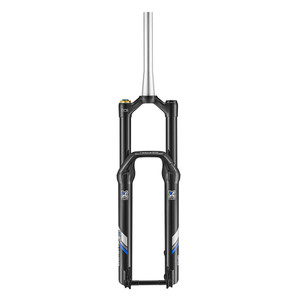

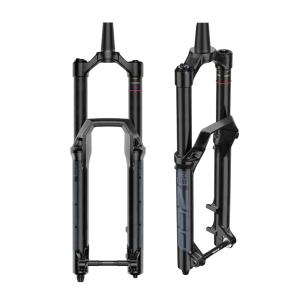

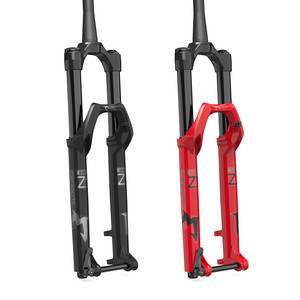
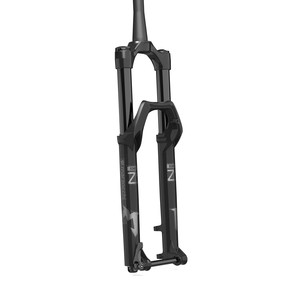
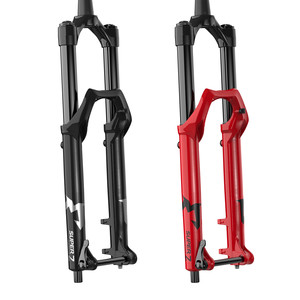






10 comments
Post a reply to: Tested: 2016 SR Suntour Durolux R2C2 Fork